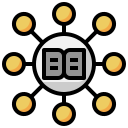
Designing Curriculum with Digital Encyclopedias: Spark Curiosity, Structure Learning
Chosen theme: Designing Curriculum with Digital Encyclopedias. Welcome, educators! Explore practical strategies, stories, and templates that turn vetted reference content into standards-aligned, inquiry-rich learning. Subscribe for new ideas, and share your questions or successes in the comments.
From reference shelves to inquiry launchpads
Once seen as static facts, modern digital encyclopedias function like springboards—interlinked entries transform background reading into guided exploration. Students follow cross-references, build concept maps, and generate questions that drive purposeful lessons and projects.
Reliable, current, and citable by design
Editorial oversight, revision histories, and citation tools make digital encyclopedias trustworthy anchors for curriculum. When students reference up-to-date entries, your assessments can emphasize accuracy, evidence, and attribution. Comment with your favorite titles and update routines.
Multimedia that meets diverse learners
Embedded images, timelines, audio, and short videos invite multiple entry points for comprehension. These assets transform dense topics into accessible narratives, helping you differentiate without rewriting everything. Share which media formats most energize your students’ curiosity.
Backward Design: Start with Outcomes, Plan with Encyclopedias
List your target standards and match each to specific entries, sidebars, and media. Build a pathway of readings that deliberately progresses from overview to depth. Invite students to propose additional entries that meet the same objectives.
Backward Design: Start with Outcomes, Plan with Encyclopedias
Frame compelling questions—Why does this matter now? Whose perspective is missing?—and pair them with encyclopedia cross-links. Essential questions energize discussions while the curated references keep inquiry anchored in credible, synthesized knowledge.
Backward Design: Start with Outcomes, Plan with Encyclopedias
Ask students to justify claims with cited encyclopedia passages and media. Rubrics can reward synthesis, comparison, and transfer. Share a rubric excerpt, and we’ll suggest ways to embed citation checkpoints and reflection prompts.
Scaffolding and Differentiation with Built‑In Supports
Offer alternate reading levels when available, and teach students to skim headings, captions, and summary boxes. Encourage preview notes that capture new terms, turning an initial scan into strategic, confidence-building reading for complexity later.
Enable translation tools, text-to-speech, and pop-up definitions. Multilingual learners gain independence while teachers focus on feedback and extension. Invite families to explore the same entries at home, normalizing shared language supports across contexts.
Provide options for representation (text, audio, visuals), action (notes, diagrams, recordings), and engagement (choice of entry paths). Encyclopedias’ modular pieces fit UDL beautifully. Share one UDL routine you’ll pilot next week.
Inquiry Projects That Students Remember
Choose a timely entry, set a focused question, and give students forty minutes to gather evidence and post a claim. Micro-inquiries create quick wins, revealing knowledge gaps that inform tomorrow’s mini-lessons and extensions.
Information Literacy as a Daily Habit
Authority, bias, and context through editorial footprints
Analyze author credentials, publication dates, and revision notes. Discuss how editorial choices shape tone and coverage. Students compare two entries on the same topic, identifying framing differences and reflecting on perspective and purpose.
Citation habits that stick
Model citation exports and quick bibliography checks. Build mini-conferences where students verify page numbers, media rights, and links. Celebrate clean citations as part of academic voice, not an afterthought tacked onto conclusions.
Triangulating facts across entries and databases
Practice cross-checking claims using related encyclopedia entries and at least one external database. Students maintain verification logs noting agreements, discrepancies, and explanations. Invite them to share surprising contradictions they resolved through triangulation.
Partnering with Librarians and Tech Coaches
01
Schedule a standing monthly planning hour. Librarians assemble topic maps linking entries, primary sources, and media. Teachers contribute standards and assessments. This shared map keeps instruction coherent while leaving room for serendipity.
02
In seventh grade social studies, Ms. Alvarez began with an encyclopedia overview on migration drivers, then guided students to regional case studies. Librarian-led workshops on citation elevated projects. Engagement soared, and misconceptions visibly declined.
03
Record two-minute teacher screencasts demonstrating one encyclopedia move—annotation, translation, or cross-link mapping. Share in a staff channel. Bite-sized, classroom-tested clips spread faster than hour-long trainings and invite honest, iterative feedback.

Rubrics that honor process and product
Design rubrics that reward questioning, note quality, corroboration, and clarity of claims alongside final outputs. Include checkpoints for using encyclopedia features strategically. Students learn that research behaviors matter as much as conclusions.

Reflection journals and portfolio curation
Ask learners to archive annotated entries, drafts, and reflections explaining how each feature aided understanding. Portfolios make growth visible, guiding conferences with students and families. Invite volunteers to present a before-and-after reading strategy story.
